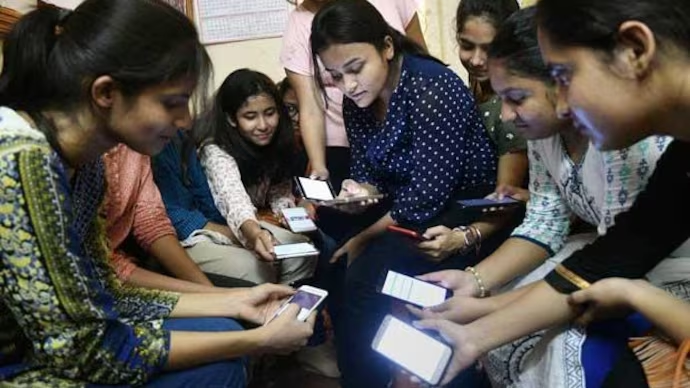The Board of Secondary Education, Assam (SEBA), declared the results of the High School Leaving Certificate (HSLC) Examination 2025 on Thursday, marking a significant moment for thousands of students across the state. Students from Jorhat and Guwahati emerged as frontrunners, capturing top positions and showcasing academic excellence. The announcement brought celebration and pride to families, schools, and communities that had supported the students through their academic journey.
SEBA officials hosted a press briefing in Guwahati to announce the results, praising the overall performance of candidates while acknowledging the dedication of teachers and school administrations. Among the highest scorers, students from Jorhat and Guwahati stood out not only for their academic marks but also for their active participation in extracurricular activities. Their achievements reflected the balanced development that Assam’s education system aims to foster.
Families gathered early in the morning to check the results online and at designated school centers. As news of the toppers spread, celebrations erupted in local neighborhoods, with friends and relatives visiting to congratulate the achievers. Some schools arranged felicitation programs the same day, recognizing the efforts of both students and educators. Teachers expressed immense pride, describing how hard these students had worked despite challenges such as syllabus revisions, exam stress, and pressure from expectations.
In Jorhat, schools reported a high pass percentage and a significant number of distinction holders. One student from a government school secured the top spot statewide, drawing widespread admiration. The school principal attributed the success to daily revision sessions, one-on-one mentoring, and active parental involvement. The student, while speaking to reporters, thanked her parents and teachers, stating that late-night studies and time management played a major role in her success.
Guwahati students too made a strong impact, with several securing ranks in the top ten list. Private and public schools both celebrated outstanding performances. Educators pointed to the role of smart classes, digital study material, and continuous assessments throughout the academic year. One student from Guwahati who secured the second rank said he avoided social media distractions and followed a strict routine. His parents shared that they limited screen time and created a supportive study environment at home.
SEBA authorities released district-wise performance data along with the results. Regions like Dibrugarh, Sivasagar, and Nalbari also showed improvement in their pass percentages compared to previous years. The board stated that it will soon analyze subject-wise trends and identify areas where students struggled the most. This data will help inform future curriculum and teacher training programs.
Despite the success stories, some districts still struggled with low pass rates. SEBA acknowledged the disparities and announced plans to collaborate with local education departments to improve performance in underperforming areas. The board stressed the importance of timely remedial classes, better infrastructure, and teacher support in rural and remote regions.
Students who did not clear the exam also received attention and guidance. SEBA officials assured them that compartmental exams would follow soon and urged them not to lose hope. Education counselors have already begun outreach programs in various districts to offer mental health support and academic planning advice.
State Education Minister Ranoj Pegu congratulated the toppers and all successful candidates. He commended SEBA for organizing smooth and timely examinations. The minister added that the government would soon launch scholarship initiatives and awards for top-performing students. He emphasized that the government would continue investing in teacher training, digital infrastructure, and inclusive education to create a more equitable academic environment.
The HSLC 2025 results represent not just academic scores but the resilience and determination of students, parents, and teachers in Assam. The success of students from Jorhat and Guwahati reflects a broader effort to raise educational standards and ensure that talent, no matter where it resides, receives the opportunity to shine.
In addition to celebrating individual achievements, educationists across Assam have begun evaluating what the results reveal about broader learning trends in the state. Experts have noted that the success of students from Jorhat and Guwahati is closely linked to their access to better facilities, higher teacher-student ratios, and exposure to competitive environments. These urban centers often benefit from stronger infrastructure and parental involvement, factors that are still lacking in many rural and marginalized districts.
The disparity between urban and rural performance has sparked renewed conversations about educational equity. While the Assam government has rolled out several initiatives to support education in tea garden and Scheduled Caste communities, stakeholders insist that consistent implementation remains key. They have urged the government to ensure timely deployment of trained teachers, regular monitoring of school performance, and the availability of resources such as textbooks, internet connectivity, and electricity.
Some students who secured top ranks shared their experiences of online learning challenges during the earlier pandemic years. Despite those hurdles, they adapted quickly once offline classes resumed. Many attributed their resilience to school efforts that prioritized bridging learning gaps through weekend sessions, mock tests, and doubt-clearing classes. These practices helped students regain momentum and approach their final board exams with confidence.
Educational institutions now look forward to using this momentum to inspire junior students. Several schools in Guwahati and Jorhat have already launched mentoring programs where toppers will guide younger students in academic planning, time management, and stress handling. These peer-led initiatives aim to foster a collaborative academic environment and reduce exam-related anxiety.
As congratulatory messages pour in from political leaders, educationists, and community organizations, the spotlight now shifts to how the state can sustain and replicate these success stories across all districts. SEBA has indicated that it will hold meetings with school heads from top-performing districts to understand best practices and replicate them where needed.
Looking ahead, the Assam government is also exploring options to integrate skill-based education and digital literacy into the high school curriculum. Officials believe that a well-rounded education will not only help students excel academically but also prepare them for future employment opportunities. The HSLC 2025 results, thus, serve as both a milestone and a mirror—highlighting achievements while calling attention to areas that still need work.

